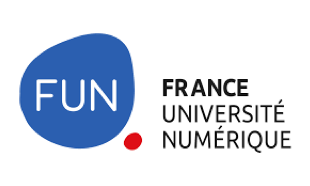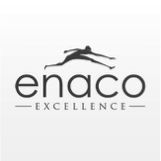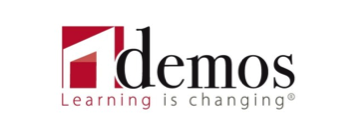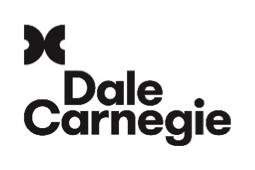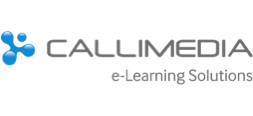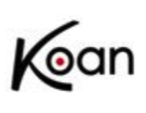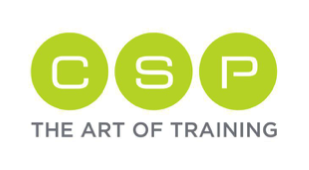Synthèse
The global e-learning market has grown significantly, with projections suggesting it will reach $991 billion by 2027, at a compound annual growth rate (CAGR) of 10.3%. Despite its global appeal, there are notable regional disparities. For example, the French market is growing at around 15% a year, although less than Germany. In the business context, the trend towards blended learning is predominant, with 74% of companies favoring this format in 2020. The majority of companies (58%) anticipate an increase in blended learning after Copenhagen 19. The main players in the sector are institutions such as Coursera, GIP FUN MOOC, OpenClassrooms and ByJu's.
The success of e-learning depends on its ability to offer flexible, cost-effective and efficient training solutions, although challenges such as lack of skills, time and budget remain. Advances in e-learning modalities such as gamification, augmented/virtual reality and rapid learning should continue to catalyze market expansion.
Increased interest in e-learning amid technological advances
Demand for e-learning is booming, with projections estimating continued year-on-year growth. This is largely attributed to the growing adoption of technological advances and a robust Internet infrastructure that facilitates access to a myriad of online educational resources. A notable trend is the move towards varied forms of e-learning, classified as MOOCs, SPOCs and COOCs, each serving different segments of learners, from the general public to corporate employees.
In the global context, the expansion of the e-learning market is pronounced, posting an impressive compound annual growth rate of around 10% and expected to reach a value of between $900 and $1,000 billion by 2027. This market is particularly thriving in regions undergoing rapid digital transformation, such as Africa, Asia and South America, where countries like India and China are emerging as leading e-learning markets, posting staggering growth rates of around 50% in recent years.
In France, although the e-learning market represents a smaller share of the global sector (around 2%), the French market is promising, with robust annual growth of around 15%. The shift from traditional face-to-face training to digital and hybrid models, known as "blended learning", is becoming increasingly widespread within companies. This adaptation can be seen as a strategic move aimed at minimizing costs while maximizing the flexibility and effectiveness of training programs. The majority of organizations appear to be integrating digital learning into their programs, and a large proportion are currently using blended learning models or are in the process of doing so.
In terms of the factors driving demand, learners are attracted by the opportunity to acquire new skills and certifications that can enhance career prospects, satisfy personal interests or meet professional needs. The flexibility of e-learning, combined with cost-effective solutions, is a compelling incentive for students and professionals alike. Similarly, companies value e-learning for its responsiveness to business needs and its potential to reduce training costs - a compelling proposition for large-scale operations.
However, this shift to e-learning presents challenges, including skills gaps, lack of time and tight budgets, indicating that the market is ripe for service providers who can tailor their services to overcome these obstacles. The most effective e-learning experiences remain those that combine traditional elements such as face-to-face interaction with modern, technological solutions such as virtual classrooms and rapid learning modules.
The production of e-learning content is increasingly carried out in-house by educational establishments and companies, reflecting a move towards personalized educational experiences. Around 60% of digital content has been produced in-house, reflecting a preference for e-learning.
The e-learning market is full of diverse players, each making their own unique contribution to the expanding world of digital education. Notable players include prestigious academic institutions, innovative training platforms, mobile apps, private companies and even individual content creators.
Each of these players plays a vital role in shaping the e-learning experience, meeting the diverse needs of learners and driving the industry forward.
- Coursera is a leading platform that collaborates with top universities to offer a wide range of online courses, specializations and degrees. Renowned for the quality and diversity of its courses, Coursera facilitates access to world-class education for learners worldwide.
- GIP FUN MOOC (France Université Numérique) embodies France's commitment to the digital learning space. It hosts a variety of courses from French universities and grandes écoles, giving French-speaking learners access to a wide range of subjects and specializations.
- ByJu's, particularly popular in India, illustrates the growth of the Asian market. Their model focuses on school-age students and offers interactive learning programs that combine technology and education to improve engagement and understanding.
- OpenClassrooms is a French platform that has carved out a niche in the market, offering employment-focused courses with mentoring and a job guarantee, demonstrating the platform's confidence in the practical effectiveness of its training offerings.
- Coorpacademy adopts a unique angle of attack, focusing on companies' employee training needs. The platform offers services to a variety of sectors with content designed to be engaging, which is key to ensuring effective corporate training environments.
- Digischool is another versatile player that has focused on the educational needs of students through digital tools and resources, primarily targeting the secondary education market. All these key players in the e-learning market are making a significant contribution to the transformation of traditional education and training paradigms. By harnessing technology, they are democratizing learning and enabling individuals and professionals to learn and develop without the constraints of geography or access to conventional educational institutions.
as the market continues to evolve, these innovators are likely to be the first to redefine the way we think about education and professional development in an increasingly digital world.
à la compréhension de ce marché
Détail du contenu
 Informations
Informations
- Nombre de pages : 30 pages
- Format : Version digitale et PDF
- Dernière mise à jour : 27/04/2023
 Sommaire et extraits
Sommaire et extraits
1 Market overview
1.1 Definition and scope of study
E-learning, or digital learning, is a learning method based on online educational resources and content . E-learning is used in personal and professional training contexts. There are three main categories of e-learning :
- The MOOC (Massive Online Open Courses) are open access courses, usually free of charge, at the end of which the public can obtain certification
- The SPOC (Small Private Online Courses) are fee-based MOOCs, with access restricted to specific users, such as university students. They can also be used to obtain certification
- The COOC (Corporate Open Online Courses) are used by companies for the training of employees and collaborators.
E-learning is related to the fields of vocational training and education. It democratizes access to training It allows for teaching flexibility and access to all users with an Internet connection, regardless of their location. E-learning can be combined with courses in face-to-face which constitute so-called "training courses" hybrids "or" blended-learning » [ Eduscol ]
On a global scale, e-learning is on the rise with an expected growth of 10.3% per year until 2027 . If north America remains the most advanced region in this area growth is expected to be very rapid in Africa, Asia and South America. In particular, India is the world's second largest e-learning market, behind the United States France is not to be outdone with an annual growth rate of 15% and a gradual catching up with Germany, Europe's most advanced country.
The e-learning market thrives with the development of teleworking . However, the 100% online is not yet in place since these are hybrid formations, mixing face-to-face and distance, which are the most popular with consumers . New innovations should appear on the market in the coming years, given the high level of investment in this area.
The main players in e-learning are Coursera, GIP FUN MOOC, ByJu's, OpenClassrooms, Coorpacademy or Digischool .
1.2 Sustained global market growth
According to Globenewswire, the global e-learning market will be $*** billion in **** and is expected to reach $*** billion by ****, with a compound annual growth rate (***) of **.*% over the forecast period.
Turnover from e-learning World, *****-*****, in billions of USD Source: ****
United States
The United States is the world leader in terms of ...
1.3 A French market lagging behind despite good prospects
In France, the e-learning market represented *** million euros in ****, or *% of the world market. [***] Yet only **% of companies were training their employees through e-learning
By way of comparison, the French market lags behind Germany. According to Christian Martin, co-founder of the consulting firm Eumathos, the German e-learning market grew by **% between ...
1.4 The Covid-19 pandemic: accelerating the spread of e-learning
Generalization of e-learning
With millions of students around the world unable to attend classes, e-learning has emerged as a necessary tool for education. Many schools and universities migrated to digital education overnight, generating a strong demand for this service.
The assets that have made e-learning a pillar of education during the ...
2 Demand Analysis
2.1 Determinants of demand
Benefits for students/employees/executives
The advantage of these new learning methods is that it is possible to follow a university or professional training course in parallel with another professional or study activity. Blended or fully online learning allows the learner flexibility and adapts to his needs without the need to ...
2.2 The success factors of e-learning
The format
The best way to ensure the long-term sustainability of the market is to ensure that consumers are satisfied with the service so that they will recommend or use it again. E-learning companies should therefore seek to ensure the most effective delivery of education.
According to a study conducted among ...
2.3 Different maturity levels in the main customer segments
E-learning is on the rise in France. At present, according to estimates, only **% of company training courses are exclusively face-to-face.
However, the penetration of online education and training is not uniform. Educational institutions and large companies have a clear lead over the public sector.
The graph below shows that while large ...
2.4 Rising training expenditure and the explosion of teleworking as drivers of e-learning growth
A gradual increase in business training expenditure
Although it fluctuates from year to year, business training expenditure tends to increase, as it grew by *% between **** and ****. This increase is due in part to the Personal Training Account, which came into force on January *, ****, creating a mechanism for financing continuing training in ...
2.5 Analyse de l'audience
Décomposition de l'audience par âge France, ****, % Source: ****
L'analyse des données montre que l'audience du marché étudié est principalement constituée de personnes âgées de ** à ** ans (***). Ces groupes d'âge sont sur-représentés par rapport à leurs proportions dans la population française. En revanche, les tranches d'âge ...
3 Market structure
3.1 The different market players
Schools/universities
The first institutions to offer fully online training are American universities, notably via MOOCs, for Massive Open Online Course. These courses are accessible directly on the websites of the schools/universities, or directly in private access to their students when it comes to personalized content
In France, HEC, ESSEC ...
3.2 Content production
A major trend in the e-learning market is the internalisation of content production, which has gradually become a reality for training organisations
External production training organizations (***) create courses that they sell to companies, universities or individual users. Internal production : companies or universities buy or develop software that allows the creation of ...
3.3 Distribution of online training and materials used
B*C Distribution e-Learning: companies that provide e-learning training to their customers give them access to dedicated platforms, applications or interfaces, usually by means of customised identifiers and passwords.
Business-to-business trade: companies specialising in e-learning training give their client companies access to their e-learning platforms, in the form of a fixed-term ...
3.4 The attractiveness of e-learning to investors
As the e-learning and MOOC market is booming, it represents a fertile breeding ground for many startups. Indeed, global investors are increasingly interested in this sector and are devoting large sums of money to its development.
Venture Capital invested in EdTech companies France, ****-****, in millions of US dollars Source: ****
The ...
4 Analysis of the offer
4.1 Training courses offered
According to Will run The most popular online courses worldwide in **** are :
Machine Learning (***) Learning how to learn: Powerful mental tools to help you master difficult topics (***) The Science of Well-Being (***) Bitcoin and Cryptocurrency Technologies (***) Algorithms, Part I (***) English for Career Development (***) Financial Markets (***) Introduction to Psychology (***) Cómo hacer una ...
4.2 Price Ranges for Online Training
The price of e-learning courses can vary enormously, from a free video to a tailor-made course ordered by a large company.
In the educational environment, when schools, colleges and high schools integrate e-learning activities into their curricula, this does not generate additional costs for parents.
Academic environment
Concerning e-learning offered by ...
4.3 The heyday of blended learning
Blended learning consists of a hybrid program between face-to-face and distance learning. This programme is particularly appreciated by companies and educational institutions because it combines the pedagogical advantages of face-to-face teaching with the flexibility of distance learning.
In ****, **% of companies setting up training courses will use "blended learning". This figure is ...
4.4 New trends in e-learning
In ****, e-learning organizations will have new technologies at their disposal that will enhance the attractiveness of their pedagogical offer. Several tools are available to future trainees to make learning easy and enjoyable.
Gamification
Long known in the video game industry, the principle of gamification is the set of point systems, objectives, ...
5 Regulation
5.1 Regulatory change and market influence
The law of March ****
Distance vocational training, and therefore e-learning, has been included in the Labour Code since March *, **** (***).
A certificate must be issued by the training organisation at the end of the programme. Most online training courses lead to certification, others lead to a diploma.
E-learning is subject to the ...
6 Positioning of the players
6.1 Segmentation
- Coursera
- GIP FUN MOOC
- Fédération Universitaire de l’Enseignement à Distance (FIED)
- ENACO
- Demos
- Docendi
- Dale Carnegie
- Callimedia
- KOAN Partners
- Edu-Performance
- Netopen
- CSP (Lebfevre Sarrut Groupe)
- Cegos
- Krauthammer
- Comundi
- OpenClassrooms
- COORPACADEMY
- Digischool
- Edflex
- Opensesame
- Crossknowledge (Wiley Group)
- GO 1
- 360 Learning
- Sator
 Liste des graphiques
Liste des graphiques
- Chiffre d'affaires de l'e-learning
- Types de formations proposées en entreprise
- Pourquoi passer au digital learning ?
- Les freins au développement du digital learning
- Efficacité des modalités d’apprentissage
Toutes nos études sont disponible en ligne et en PDF
Nous vous proposons de consulter un exemple de notre travail d'étude sur un autre marché !
Dernières actualités
Entreprises citées dans cette étude
Cette étude contient un panorama complet des entreprises du marché avec les derniers chiffres et actualités de chaque entreprise :
 Choisir cette étude c'est :
Choisir cette étude c'est :
Accéder à plus de 35 heures de travail
Nos études sont le résultat de plus de 35 heures de recherches et d'analyses. Utiliser nos études vous permet de consacrer plus de temps et de valeur ajoutée à vos projets.
Profiter de 6 années d'expérience et de plus de 1500 études sectorielles déjà produites
Notre expertise nous permet de produire des études complètes dans tous les secteurs, y compris des marchés de niche ou naissants.
Notre savoir-faire et notre méthodologie nous permet de produire des études avec un rapport qualité-prix unique
Accéder à plusieurs milliers d'articles et données payantes
Businesscoot a accès à l'ensemble de la presse économique payante ainsi qu'à des bases de données exclusives pour réaliser ses études de marché (+ 30 000 articles et sources privées).
Afin d'enrichir nos études, nos analystes utilisent également des indicateurs web (semrush, trends…) pour identifier les tendances sur un marché et les stratégies des entreprises. (Consulter nos sources payantes)
Un accompagnement garanti après votre achat
Une équipe dédiée au service après-vente, pour vous garantir un niveau de satisfaction élevé. (+33) 9 70 46 55 00
Un format digital pensé pour nos utilisateurs
Vous accédez à un PDF mais aussi à une version digitale pensée pour nos clients. Cette version vous permet d’accéder aux sources, aux données au format Excel et aux graphiques. Le contenu de l'étude peut ainsi être facilement récupéré et adapté pour vos supports.
 Nos offres :
Nos offres :
the e-learning and MOOCs market | France
- Quels sont les chiffres sur la taille et la croissance du marché ?
- Quels leviers tirent la croissance du marché et leur évolution ?
- Quel est le positionnement des entreprises sur la chaine de valeur ?
- Comment se différencient les entreprises du marché ?
- Données issues de plusieurs dizaines de bases de données
Pack 5 études (-15%) France
- 5 études au prix de 75,6€HT par étude à choisir parmi nos 800 titres sur le catalogue France pendant 12 mois
- Conservez -15% sur les études supplémentaires achetées
- Choisissez le remboursement des crédits non consommés au terme des 12 mois (durée du pack)
Consultez les conditions du pack et de remboursement des crédits non consommés.
- 13/01/2024 - Ajout des informations de l'entreprise Sator
- 09/10/2023 - Ajout des informations de l'entreprise 360 Learning
- 09/09/2023 - Ajout des informations de l'entreprise Indigo Publications
- 13/05/2023 - Ajout des informations de l'entreprise GO 1
- 13/05/2023 - Ajout des informations de l'entreprise Crossknowledge (Wiley Group)
- 13/05/2023 - Ajout des informations de l'entreprise Opensesame
- 13/05/2023 - Ajout des informations de l'entreprise Edflex
- 27/03/2023 - Mise à jour des visuels
- 27/03/2023 - L'étude a été complètement mise à jour par un analyste Businesscoot. En plus de cette revue complète, des informations sur les stratups EdTech ainsi que sur les tendances du digital learning en France deux ans après la crise sanitaire ont été ajoutées.





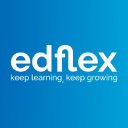 Formation professionnelle : Edflex rachète son concurrent OfCourseMe - 15/04/2024
Formation professionnelle : Edflex rachète son concurrent OfCourseMe - 15/04/2024
 360Learning s'offre pour aider les entreprises à identifier les compétences en interne - 09/10/2023
360Learning s'offre pour aider les entreprises à identifier les compétences en interne - 09/10/2023

